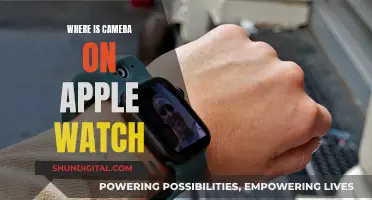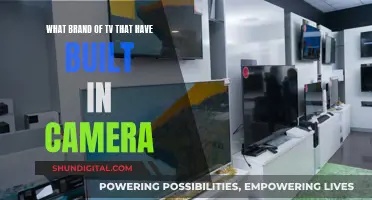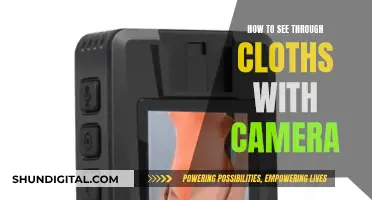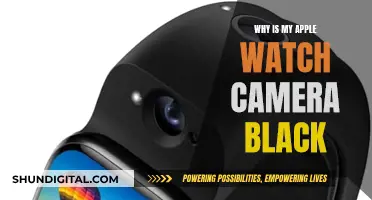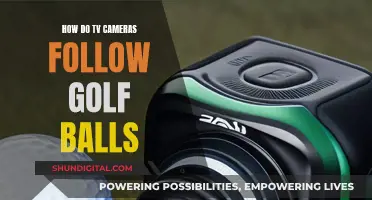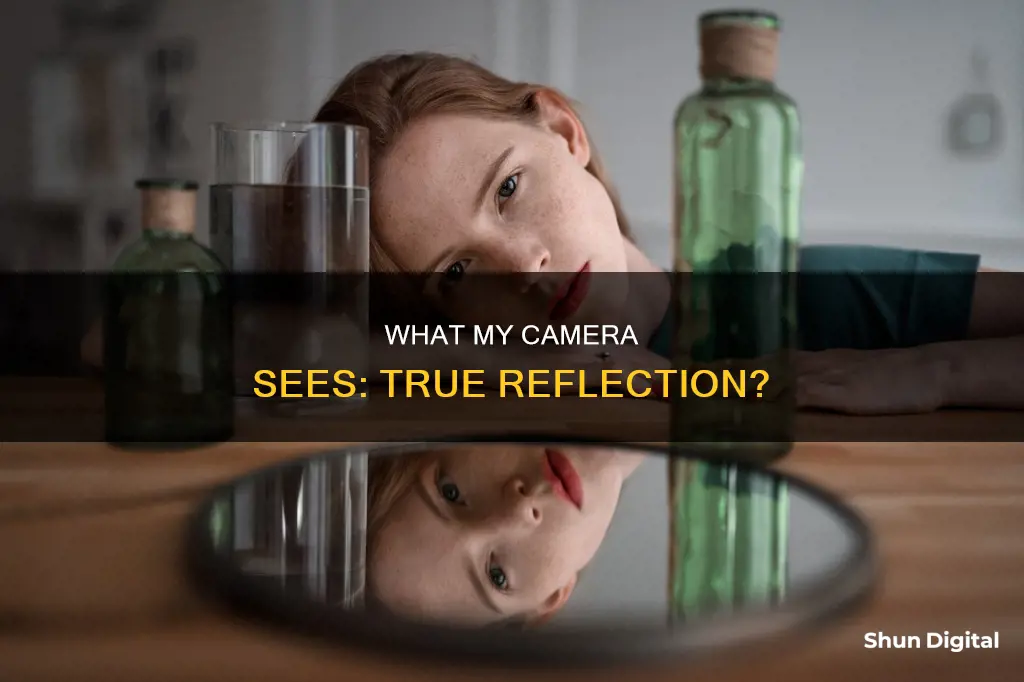
The human eye sees the world in three dimensions, but cameras do not. Cameras are mono-vision and only have one eye, which can distort images. This is why a selfie taken with a wide-angle lens on a smartphone can make your nose look bigger than it is. The distance between the camera and the subject also affects the level of distortion, with closer distances leading to greater distortion.
The image of yourself that you see in the mirror is actually reversed. When you look in a mirror, what you see is a reflected image of yourself. In contrast, when other people look at you, they see your image unflipped. This is why you might look different in photographs taken by other people compared to selfies or your reflection in the mirror.
| Characteristics | Values |
|---|---|
| How people see you | Inverted, not like how you see yourself in the mirror |
| Why you look different in photos | You are more familiar with your mirror image |
| Which is more accurate, mirrors or photos? | Mirrors are generally more accurate than photos |
What You'll Learn

The camera distorts everything
How Cameras Distort
The camera is not like the human eye. Our eyes see a scene in stereo and use the brain to process it and take relative distance and perspective into account. Our brains are always making allowances for spatial relationships between objects. But a camera has just one "eye" and can change that, making things seem out of proportion to each other. This is called forced perspective.
A camera is limited by the lens, focal length, lighting, posing of the subject, and the perspective from which the photo was taken.
How to Avoid Distortion
To avoid distortion, you need to understand what causes it. A cheap lens attachment can make vertical and horizontal lines bend and warp, especially indoors. The distortion is less noticeable outdoors, where there are fewer straight lines.
Lenses
There are two types of lens distortion: barrel and pincushion. Barrel lens distortion is common in wide-angle lenses. The lens built into your smartphone is a wide-angle lens. The barrel distortion in the default camera is not very noticeable due to algorithms and image processing. The distortion becomes quite noticeable when you add a wide-angle lens attachment to the phone.
Pincushion lens distortion is the opposite: straight lines curve inward from the edges, looking squashed in the middle of the photo. This distortion is more common in zoom lenses.
Perspective Distortion
Perspective distortion occurs when objects that are further away appear smaller. For example, if you hold the phone close to a person's face, their ears look smaller and their nose looks larger. This is because objects closer to the lens appear larger.
Most people believe that distorted facial features are the result of a wide-angle lens, but it's actually about your distance from the subject. If you want to fit a whole face in the frame, you need to step back, and it's this distance that makes everything appear more natural.
Fixing Distortion
You can fix or introduce lens distortion using the SKWRT app, available on both iPhone and Android. For perspective distortion, try Snapseed (iPhone and Android) or Adobe Lightroom mobile (subscription required).
Silverado's Camera: Seeing Through Trailers
You may want to see also

The camera is not like the human eye
The human eye and a camera lens both focus an inverted image onto a light-sensitive surface. However, the eye, aided by the brain, can view an entire scene in stereo and use the brain to process it and take relative distance/perspective into account. The camera does not do this, and the photographer has to compensate.
The distance of the camera from the subject is also important. The closer the camera is to the subject, the larger that subject will appear relative to things further away. This is why selfies, usually taken at arm's length, can make one's nose or chin look much larger than they are in reality.
The focal length of the lens also makes a difference. A wide-angle lens will allow you to see a larger slice of the scene in front of you, whereas a longer lens will cut out the sides and just capture a smaller slice. If you want to change how much of the scene the camera captures, you need to physically move toward or away from the subject.
The lighting is also a factor. In bright daylight, we can see further than in twilight.
Monitoring Audio Levels with Blackmagic Cameras
You may want to see also

Close to the camera = larger, further away = smaller
The distance between the camera and the subject of a photo has a significant impact on the final image. This is true whether you are taking a selfie or having your photo taken by someone else.
When taking a photo, the distance from the camera to the subject will determine how big or small the subject appears in the frame. The closer the camera is to the subject, the larger the subject will appear; the farther away the camera is, the smaller the subject will appear. This is because the camera's "eye" is different from the human eye. The camera does not process spatial relationships between objects in the same way that the human brain does. As a result, the camera distorts everything, all the time, and the photographer's job is to manipulate this distortion to their advantage.
For example, if you are taking a photo of a person and want to emphasise their nose, you would get closer to the person so that their nose is closer to the lens than their eyes. This will make the nose look bigger in the photo. On the other hand, if you want to minimise the size of the nose, you would stand farther away and use a longer focal length.
The distance between the camera and the subject also affects the depth of field in a photo. The depth of field refers to the area in a photo that appears to be in focus. When you are closer to the subject, you can achieve a shallower depth of field, which can be advantageous in portraits or sports photography. However, if you are taking a group photo, you would want a greater depth of field, so you would stand farther away.
In addition to the distance between the camera and the subject, other factors also affect the final image. These include the camera itself, the focal length of the lens, lighting, posing of the subject, and the perspective from which the photo is taken.
Where is the Camera on My Smart TV?
You may want to see also

Selfies are distorted because of the distance, not the lens width
The lure of the selfie
The appeal of selfies is the idea that we can show the world how we see ourselves. We can carefully compose the photo, choosing the right angle, lighting, and expression. Selfies can make us feel great, but they can also make us feel insecure.
Cameras distort the face
Selfies are not accurate reflections of reality. Cameras distort everything, all the time. The camera is not like the human eye, which can view an entire scene in stereo and use the brain to process it and take relative distance/perspective into account. The brain is always making allowances for spatial relationships between objects, but a camera can change that, making things seem out of proportion to each other.
The distance, not the lens width
It is commonly believed that selfies are distorted because cell phone cameras use wide-angle lenses. While this is somewhat true, it is not the entire truth. The real issue is how close we have to get to the subject to make them fill the frame. When taking a selfie, we usually want to focus on our face, so we get nice and close. But when we get very close to someone to take a photo, their nose is much closer to the lens than their eyes, and this is what makes the nose look larger.
How to get a good photo
Being a good and knowledgeable portrait photographer is key. Distance from the subject, camera angle, lighting, and posing can all be used to change a person's appearance, without the need for Photoshop or any editing apps.
Cameras' Night Vision: Unlocking the Secrets of Dark Photography
You may want to see also

Mirrors are generally more accurate than photos
Mirrors are generally considered more accurate than photos because they do not alter the image they reflect. A mirror simply reflects the object and reverses it from left to right, creating an image without any quality alteration. On the other hand, a photo is dependent on various environmental factors that can affect its quality, such as lighting and the type of camera and lens used.
The familiarity principle, also known as the mere-exposure effect, suggests that we prefer what we are most familiar with. Since we see ourselves in the mirror more often than we take photos of ourselves, we are more inclined to like our mirror image. Our brains are accustomed to the image of ourselves in the mirror, and seeing a photo can distort this familiarity, making us think we look worse in photos.
Additionally, photos are affected by angles, lenses, and cameras. For example, a photo taken from certain angles can appear blurred, and the lens of the camera can cause distortion, especially if the subject is very close to the camera. Wide-angle lenses, often used in selfies, can stretch out the image, making facial features look bigger or stretched out.
However, it is important to note that the accuracy of a mirror or a photo depends on your perspective. While a mirror shows you a reversed image, a camera captures a picture that is not reversed, making it more accurate from the viewpoint of other people.
Pet Cameras: Do Dogs Watch and Care?
You may want to see also
Frequently asked questions
The mirror image you are used to seeing is reversed, so when you take a selfie with some apps or the front-facing camera on an iPhone, the image captures your face as others see it. This can be disconcerting because our faces are not perfectly symmetrical, so certain features look different to how they do in the mirror.
Our brains are wired to prefer things that we see frequently, so because we see our mirror image every day, we prefer it to the image captured in photos. Photos can also be affected by factors such as lighting, angle, lens size and quality, which can distort the image.
If you want to see yourself as you appear to others, you need to be photographed from a distance, through a telephoto lens. This will put your features back into their actual configuration by narrowing the plane of your face.



